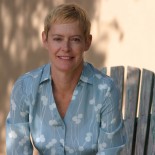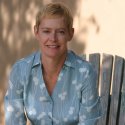
Exercise science shows that you will get the most health benefits in the first 20 minutes of exercise, especially if you don’t exercise much. You will get benefits from longer periods of activity, but that first 20 minutes has the most health impact.
Exercise changes how every part of your body functions. Bodies are designed for activity. Your genes want you to get moving. You can reduce risk for chronic diseases by getting active.
Brain Benefits
Exercise increases the number of cells in your brain, largely in the hippocampus. Your hippocampus creates new brain cells until you die. This area of the brain is responsible for memories. Animals who are active make three to four times as many brain cells in the hippocampus as those who were sedentary.
Running, Jumping & Balance Exercises
Aging brings about concern for the knees. Contrary to popular belief, running is actually good for your knees. It improves the health of your cartilage and reduces your risk for arthritis. Unless you have a history of knee problems, running should not hurt them.
If your goal is just to be healthy, your prospects are greatly improved by running five minutes per day at a moderate pace. You can start slow and work your way up to longer running sessions three to five times a week.
Jumping up and down is the best way to stimulate bone strength. Five minutes of jumping rope or hopping around proves effective to help you have stronger, healthier bones. Dancing also contributes to bone strength. Check with your doctor, though, if you have weak bones.
Find the things that give you pleasure. You’ll stick with those activities. Doing something is better than doing nothing.
It’s important to practice balance. You can improve balance by doing simple activities on one leg. Try closing your eyes while on one leg.
More Women-Focused Research is Needed
Women are rarely included in exercise science studies because of menstruation. It’s hard for research scientists to accommodate that in their studies. There is some evidence that women may be at slightly higher risk for ACL tears early in their periods. Women are better at pacing during runs than men. Information on how women use fuel, store fat and how periods affect thinking haven’t been observed. Perhaps more female research scientists would be willing to find out this information.
A newly discovered hormone called irasin is created by working muscles. It goes straight to your fat cells and turns your white fat to brown. Brown fat is metabolically active and burns more calories. It also appears to make your body less likely to add more fat. Again, your body wants to move.
Listen in as New York Times fitness columnist, Gretchen Reynolds, shares the benefits of getting active.
